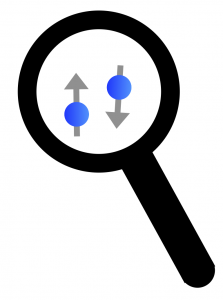- Home
- Institut Néel
- Research teams
- Technical Groups & Services
- Work at the Institut
- Partnerships
 Next Quantum Materials Seminar/LANEF:
Next Quantum Materials Seminar/LANEF:
Thursday, November 30th 2023 at 2:00 pm
Michel Gingras (University of Waterloo, Canada)
“Two untrodden paths to spin liquid candidates on the pyrochlore lattice ”
To access this seminar:
Institut Néel CNRS, Building K, Room Rémy Lemaire (K223)
Abstract: Over the past thirty years, the pyrochlore lattice of corner-sharing tetrahedra has served as the premier platform for the study of frustrated magnetism in three dimensions, including classical and quantum spin liquidity, with a rich interplay of theoretical and experimental developments. The most general anisotropic bilinear spin-1/2 Hamiltonian model for this lattice admits four independent spin-spin couplings, which has been widely used to describe the properties of the magnetic rare-earth pyrochlore oxide materials. In this talk, I will briefly highlight the results from two recent works [1,2]:
I will first discuss the situation where these couplings are fine-tuned to realize a “triple point” in the ground state phase diagram where a spin ice state and two long-range ordered phase meet [1]. At the classical level, a system with this fined-tuned Hamiltonian displays a classical spin liquid state with intertwined rank-1 and rank-2 gauge fields over a finite temperature window. Upon cooling, the model undergoes a thermal crossover to a spin ice state that is selected through a “disorder-by-disorder” fluctuation mechanism. In contrast, the corresponding quantum model displays a spin liquid with coexisting vector and matrix gauge fields at zero temperature. These results may be relevant to the highly paradoxical Tb2Ti2O7 rare-earth pyrochlore oxide compound.
The simplest version of the spin-1/2 Hamiltonian consists of one Ising coupling that imposes a local microscopic constraint on every tetrahedron, such that the low-temperature phase is described by a coarse-grained vector field 𝑬 satisfying a divergence-free condition, ∇·𝑬=0. These local constraints leave a highly-degenerate ground state manifold, in which spins collectively align in a head-to-tail fashion to form a network of closed strings referred to as a Coulomb phase or string condensate. Point-like quasiparticle excitations (spinons) then appear at the ends of open strings of spins, acting as local “electric charges” 𝑄 sourcing the divergence of 𝑬 via an emergent Gauss law, ∇·𝑬=𝑄. I will illustrate that a novel Ising spin vorticity model can be constructed on the pyrochlore lattice that supports a classical spin liquid in which the ground state consists of a condensate of closed membranes and where the low-energy defects are strings that live on open membranes. The ground state manifold of this spin vorticity model is a novel classical spin liquid – a 2-form Coulomb phase [2]. If time permits, I will present some Monte Carlo simulations of that classical model and comment on the effect of quantum exchange term causing membrane exchange/membrane tunneling and the possible existence of a 2-form U(1) quantum spin liquid.
[1] Daniel Lozano-Gómez et al., Competing Gauge Fields and Entropically-Driven Spin Liquid to Spin Liquid Transition in Non-Kramers Pyrochlores; arXiv:2310.16682
[2] K.T.K. Chung and M.J.P. Gingras, 2-Form U(1) Spin Liquids: Classical Model and Quantum Aspects; arXiv:2310.17607
The organizers:
Elsa Lhotel (elsa.lhotel@neel.cnrs.fr)
Florence Levy-Bertrand (florence.levy-bertrand@neel.cnrs.fr)
